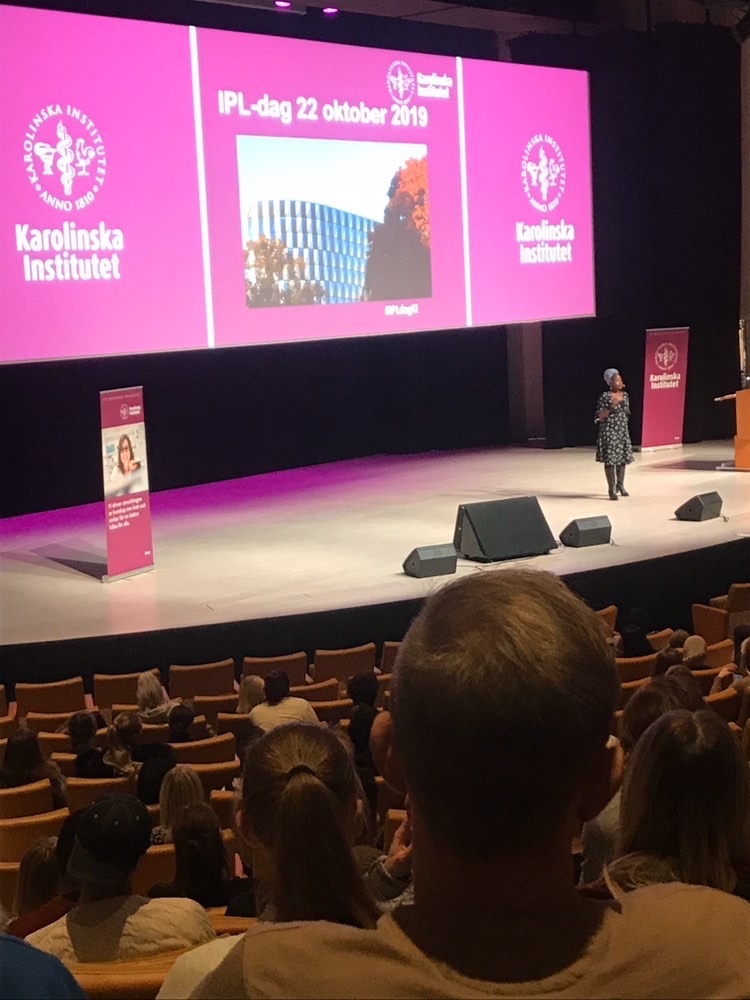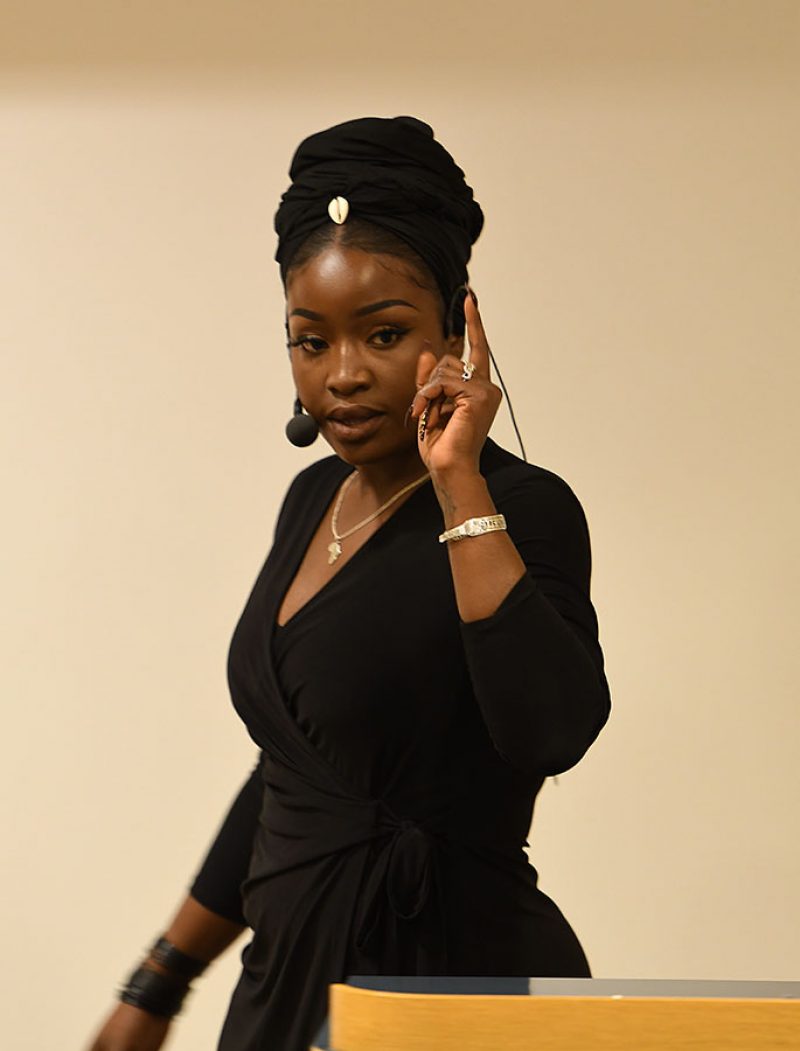Navigating Autism and ADHD as a Black Woman in the Nordics

Intent vs. Impact: Lovette Jallow’s Encounter with the Head of DEI
It began with an unexpected email from the Head of DEI at a renowned insurance company. Intrigued by the prospect of collaboration and inspired by their public commitment to diversity advocacy, I responded. We exchanged multiple emails and set up calls regarding workshops to equip their teams with tools for navigating neurodiversity in the workplace, both for their employees and clients. Our initial exchanges were promising, with the Head of DEI expressing genuine interest in my insights and expertise, leading to the planning of a session.
However, as discussions progressed, we agreed to reconvene after the summer. When I followed up within the agreed timeframe, radio silence ensued. After multiple attempts to uphold our agreement, I decided to step back. This was perplexing since I typically don’t pursue opportunities; they had approached me based on my track record. Unfortunately, such situations are not uncommon in DEI, particularly for Black women. Lapses in communication and unclear styles can be especially challenging for someone with autism and ADHD. I personally thrive on clear and direct communication in my spectrum.
The Reality of DEI in Corporate Environments
What struck me most was the stark contrast between the Head of DEI’s public persona—a vocal advocate for DEI and transparent communication—and the reality of our interactions. However, the radio silence after such enthusiastic and clear initial approach was baffling. It wouldn’t end there…
To illustrate these challenges further, six months later, I was interviewed about DEI in the Nordics and what differentiates it from the rest of Europe and the USA. During this interview, I discussed my experiences and the challenges faced by marginalized voices in DEI spaces. I shared how individuals often contact me under the guise of work to “pick my brain” and supplement their own knowledge without offering anything in return. The Head of DEI at the insurance company was just one example of this pattern.
When the reporter asked if I reached out to him to ask about his silence, I explained that I do not entertain “pick my brain” meetings. I prefer when people are direct and clear about their intent so I can move accordingly. However, many DEI practitioners in the Nordics lack range and often attempt to befriend me to gain knowledge instead of paying for my time. Ironically, they are “un-DEI-ing” DEI by replicating the same power dynamics and occupying spaces better suited for others.
“It’s common for organizations to publicly advocate for communities they profit from, yet fail to authentically include them in decision-making or even communication processes.”
Organizations often claim to advocate for communities they profit from but do everything they can to avoid authentically including them in decision-making processes. This gap between advocacy and action underscores the need for constructive engagement and internal feedback. For Black women, navigating these discrepancies without relying solely on intent is a common reality.
Aligning Words with Actions in DEI
Reflecting on this situation during my interview about DEI progress in the Nordics, I recognized the importance of seeking clarification and potentially needing to address the impact of their actions. I decided to engage in open dialogue and provided constructive feedback to the Head of DEI. He cited illness as the reason for his lack of response, claiming he couldn’t communicate with anyone or set an out-of-office message, which I initially understood.
However, during a follow-up interview to review my quotes, the reporter informed me that the Head of DEI had been active online—a fact I had not checked myself as we were not connected on LinkedIn. Despite his silence with me, he continued to pontificate online about transparency, communication, and accountability within DEI. This revelation highlighted a critical power dynamic: those in positions of authority publicly advocating for inclusivity but failing to engage meaningfully with the very communities they claim to support.
Although initially baffled by this discrepancy, I had not yet responded to him. When I did, I responded with empathy, acknowledging his health challenges, but also emphasized the crucial need to align words with actions, especially in DEI initiatives where integrity and authenticity should be paramount. While recognizing the difficulties he faced, I held him accountable for the inconsistency between his words and actions. I stressed the importance of consistent communication and genuine engagement, urging reflection on the values he professed and their impact on marginalized communities.
Through my advocating for myself in this matter, I demonstrated the power of navigating neurodiversity in DEI spaces. I underscored the significance of empathy, understanding, and inclusive communication in driving meaningful change and fostering environments where all voices are valued and respected. During our communication period, I too was dealing with my own health concerns. Despite having fewer resources than a multimillion-dollar insurance company, I ensured that my contacts and clients were informed about any delays or absences. This exemplifies respect for others, regardless of their status, ethnicity, age, or ranking.
Navigating Neurodiversity and Intersectional Challenges
Intent goes out the window when you are made aware of the impact. If you are in a DEI leadership role advocating for communities you may not belong to, you must prioritize authentic inclusion, transparent communication, and meaningful engagement. This incident highlighted the importance of honesty and transparency in showcasing the challenges faced by Black educators and DEI workers.
Insights from Email Correspondence with the Head of DEI
Lack of Accountability
Despite his position, the Head of DEI’s failure to communicate effectively and his subsequent excuses highlight a lack of accountability. When I initially contacted him to ask for clarity, he claimed illness and dismissed his actions as a “naive mistake,” unaware that I knew he was active online and publicly emphasizing the importance of communication in neurodivergent spaces. This lack of honesty is troubling and reflective of a broader issue in DEI work.
Many DEI initiatives are led by individuals who do not have the lived experiences of the people they claim to advocate for. These leaders often go to great lengths, including lying, to avoid accountability, which calls into question their ability to genuinely enforce DEI principles. The power dynamics they hold over marginalized individuals only perpetuate inequities rather than dismantle them. This underscores a critical need for DEI work to be informed and led by those with authentic, lived experiences to ensure genuine advocacy and meaningful change.
I also cc’d the CEO in my response so he could understand the situation and take a stance. However, it’s likely nothing will change, as companies often hire people who help maintain the status quo. Therefore, I decided to write this article for those who need to avoid these mistakes. I make my intentions clear. I advocated for myself and others navigating the intersection of neurodiversity, race, privilege, and DEI in professional spaces.
Drawing from my conversation with the reporter, I emphasized the importance of transparent and consistent communication, particularly for neurodivergent individuals who are always penalised yet often provide and also rely on clear information to navigate professional environments.
My efforts to maintain communication despite my own health challenges highlight the need for robust communication protocols within DEI initiatives. This exemplifies respect for others, regardless of their status, ethnicity, age, or ranking.
 Intersectional Challenges
Intersectional Challenges
My experience underscores the additional barriers faced by individuals with intersectional identities. As a Black woman with autism and ADHD, I had to navigate not only the typical challenges of DEI work but also the compounded difficulties of being neurodivergent and historically marginalized.
Studies show that Black women, especially those with disabilities, face higher scrutiny and less leniency in professional environments compared to their peers. Research indicates that Black women are less likely to be given the benefit of the doubt and more likely to face harsher judgment for similar behaviours exhibited by their white counterparts.
According to a report by the National Women’s Law Center, Black women are often held to higher standards and are less likely to receive the same level of understanding and flexibility in the workplace. Additionally, individuals with ADHD are frequently perceived as unreliable, leading to increased pressure to overcompensate and prove their competence. Autistic individuals, who rely on clear and direct communication to navigate professional environments effectively, often face significant challenges when such communication is lacking. For Black autistic individuals, this is rarely due to their own shortcomings but because they are penalized more harshly. The intersectional aspect means they are punished multiple times over, compounding the barriers they face. I myself have faced workplace discrimination and penalties despite my high education and achievements, which led me to write a book on how to navigate these challenges. Today, I work with companies to adapt workplaces and educate them on these issues. This is the premise under which the Head of DEI was recommended to contact me, highlighting my competence and lived experiences that he lacks..
Unlike my counterpart, I am not afforded the grace to neglect responding to my clients, even when I am ill. With my intersecting identities, there is no room for such leniency; I am expected to maintain communication and professionalism at all times. Meanwhile, he was able to prioritize posting on LinkedIn and responding to others, yet chose not to communicate with me—the very person whose time he had taken and with whom he had initiated contact on numerous occasions. This disparity highlights the persistent inequities and additional pressures faced by marginalized individuals in professional settings, reflecting broader systemic issues that need to be addressed.
Inconsistent DEI Implementation and Power Dynamics
The Head of DEI cited illness as the reason for his lack of response but remained active online, highlighting a stark discrepancy between his public advocacy and private actions. This inconsistency reflects broader structural issues within DEI efforts, where public commitments are not always matched by internal practices. His role allows him to prioritize his online presence over direct communication with voices he deemed less important but sought out. This behaviour clearly demonstrates the priority order: writing contributions on LinkedIn using insights taken from the very voices he ignored. This exemplifies the troubling trend in Nordic DEI practices—promoting inclusivity superficially while perpetuating the same inequities. As a reminder, my work is copyrighted and legally protected as an author, much written here is also in my book just expounded with real-life experiences in 2024.
Practical Strategies for DEI in the Workplace
As my journey continues, I remain steadfast in my dedication to advancing DEI principles beyond words. We need to foster environments where diversity isn’t just acknowledged but understood, equity isn’t merely a goal but a practiced reality, and inclusion isn’t just a concept but a lived experience.

Seven Actionable Points for Effective DEI
- Prioritize Authentic Inclusion: Ensure that diversity and inclusion efforts genuinely integrate marginalized voices into decision-making processes and create equitable opportunities for all stakeholders.
- Practice Transparent Communication: Foster open and transparent communication channels within your organization, emphasizing honesty and accountability in all interactions.
- Engage in Meaningful Feedback: Seek and embrace constructive feedback from diverse perspectives, both internally and externally, to continuously improve DEI initiatives.
- Prioritize Competence Over Comfort: When hiring DEI personnel, prioritize qualifications and expertise over personal comfort, ensuring the most competent individuals lead DEI initiatives.
- Align Words with Actions: Ensure that organizational values are reflected in actions and behaviors. Hold leadership and employees accountable for upholding DEI commitments.
- Provide Training and Resources: Invest in ongoing training and resources to increase awareness and understanding of DEI issues, empowering individuals to contribute to a more inclusive workplace culture.
- Measure and Evaluate Progress: Establish metrics and evaluation processes to assess the effectiveness of DEI initiatives. Regularly review progress and adjust strategies as needed.
Who is Lovette Jallow?
Lovette Jallow is a trailblazing leader in DEI initiatives, antiracism advocacy, and neurodiversity awareness. An 8-time award-winning lecturer and inclusion strategist, Lovette has delivered over 400 lectures worldwide, collaborating with municipal and government bodies, Fortune 500 companies, and non-profits to make a global impact.
As the bestselling author of “Black Vogue – Shades of Beauty” and “Främling i Vita Rum (Stranger in White Spaces),” Lovette has transformed the beauty industry and highlighted the challenges faced by marginalized communities in Sweden. Her commitment to equality and justice is unwavering, reaching over 8 million individuals across all platforms.
In addition to her advocacy and educational work, Lovette founded Action for Humanity in 2017 to provide aid for refugees and address human rights issues. The organization has grown substantially, focusing on spreading awareness about structural racism, providing safe spaces for marginalized groups, and offering support through legal guidance, financial aid, and educational programs. Projects include the successful repatriation of 38 Gambian women and children from Lebanon and ongoing support for marginalized communities in Sweden.
Experience Lovette’s comprehensive strategies and services by visiting her services page today. Join the movement towards a more inclusive and equitable future.
For further insights and to keep the conversation going, visit her website and learn more.
All texts are copyrighted.
Discover more in her book, ‘Främling i Vita Rum (Stranger in White Rooms).


